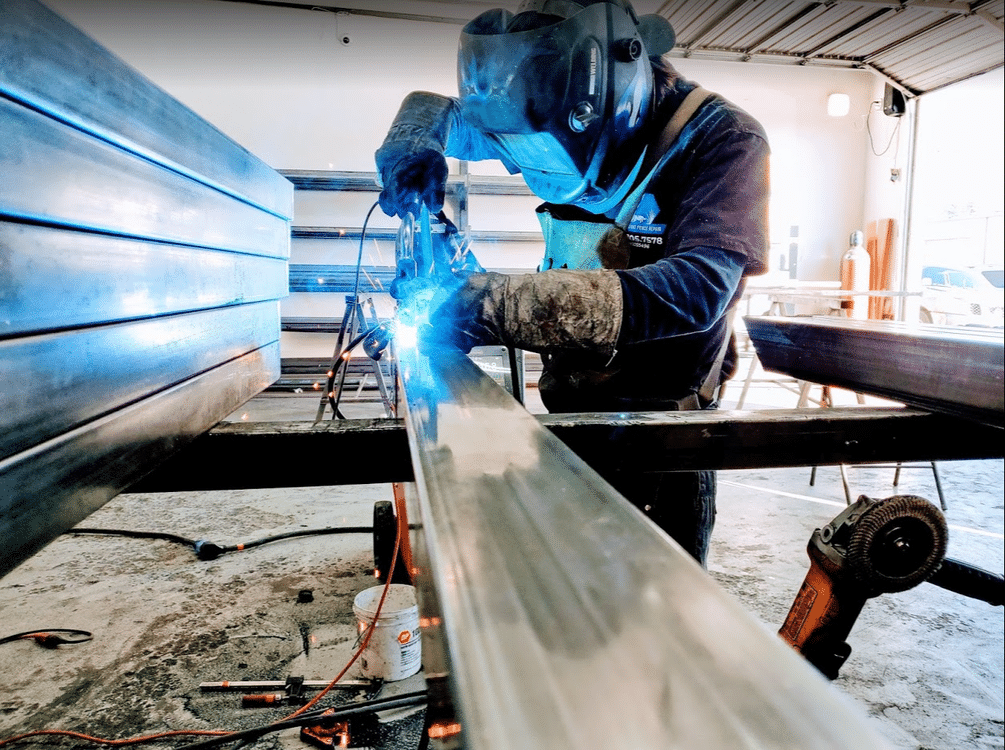Licensed Welding Inspection Service for Building Sites
Licensed Welding Inspection Service for Building Sites
Blog Article
Understanding the Various Types of Welding Techniques and Providers Offered

Introduction of Welding Techniques
Welding techniques incorporate a diverse variety of approaches used to sign up with products together permanently. One typical approach is arc welding, which includes producing an electric arc between an electrode and the base material to melt and fuse them with each other. This technique is flexible and can be made use of with different metals, making it one of one of the most widely utilized welding procedures.

Additionally, TIG welding, or Gas Tungsten Arc Welding (GTAW), is a clean and exact welding technique that uses a non-consumable tungsten electrode to develop the weld. TIG welding is commonly utilized for thinner materials and supplies exceptional control over the welding procedure. Generally, understanding these numerous welding methods is crucial for choosing the most appropriate approach for various tasks.
Commonly Utilized Welding Approaches
A range of frequently used approaches are utilized in the area of welding to effectively join materials with each other. Among the most extensively utilized strategies is Gas Metal Arc Welding (GMAW), also understood as MIG welding. This technique utilizes a cable electrode that is fed with a welding gun, together with a protecting gas to protect the weld from contaminants in the air. Another typical technique is Shielded Metal Arc Welding (SMAW), or stick welding, which uses a flux-coated electrode to create the weld. Tungsten Inert Gas (TIG) welding is favored for its precision and convenience, making use of a non-consumable tungsten electrode to generate the weld. Flux-Cored Arc Welding (FCAW) is frequently made use of in industrial setups as a result of its high welding rate and transportability. Additionally, Immersed Arc Welding (SAW) is optimal for developing deep welds on thick materials. These frequently used welding techniques cater to different needs and materials, giving alternatives for various welding applications.
Advanced Welding Provider
Structure upon the foundation of typically utilized welding methods, the world of innovative welding services incorporates innovative techniques and technologies that press the limits of accuracy and performance in product joining procedures. Advanced welding solutions commonly entail specialized techniques such as laser welding, electron beam welding, and friction mix welding. Laser welding makes use of a very concentrated beam of light to specifically sign up with metals with very little heat-affected areas, making it optimal for complicated or fragile elements. Electron light beam welding, on the other hand, uses a high-velocity electron beam to develop deep weld infiltrations in materials like aerospace alloys or dissimilar steels. Rubbing mix welding, a solid-state joining process, allows the welding of products that are testing to fuse making use of typical approaches, like aluminum and copper. These advanced methods use enhanced control over the welding procedure, causing more powerful, much more durable welds with lowered distortion and enhanced total quality.
Specialized Welding Strategies

One more specialized welding method is laser beam welding, where an extremely concentrated beam of light is made use of to join steels with very little heat-affected areas and distortion. These specialized welding strategies display the diversity and development existing in the field of welding, supplying solutions for a broad variety of commercial applications.

Choosing the Right Welding Refine
With numerous welding methods offered, it is critical to consider variables such as the kind of metal, thickness, joint style, and desired end result when choosing the appropriate welding process. Among the typical welding approaches are Gas Metal Arc Welding (GMAW), Shielded Steel Arc Welding (SMAW), Gas Tungsten Arc Welding (GTAW), and Flux-Cored Arc Welding (FCAW) GMAW, additionally understood as MIG welding, is ideal for welding thin to thick metals and is functional in various settings.
Verdict
In verdict, understanding the numerous types of welding strategies and services readily available is essential for picking the right method for a details job. By being mindful of the typically made use of welding approaches, advanced welding services, and specialized methods, individuals can make educated choices to make certain the success of their welding jobs. It is essential to think about elements such as useful source products, task requirements, and spending plan when choosing one of the most ideal welding procedure.
From standard techniques read the full info here like stick welding to innovative procedures such as laser welding, the globe of welding offers a wide range of choices for joining metals together.Furthermore, TIG welding, or Gas Tungsten Arc Welding (GTAW), is a precise and clean welding technique that utilizes a non-consumable tungsten electrode to produce the weld. Advanced welding services frequently include specialized approaches such as laser welding, electron beam of light welding, and friction mix welding. Amongst the typical welding approaches are Gas Metal Arc Welding (GMAW), Shielded Steel Arc Welding (SMAW), Gas Tungsten Arc Welding (GTAW), and Flux-Cored Arc Welding (FCAW) By being conscious of the commonly utilized welding techniques, progressed welding solutions, and specialized techniques, people can make informed choices to make sure the success of their welding jobs.
Report this page